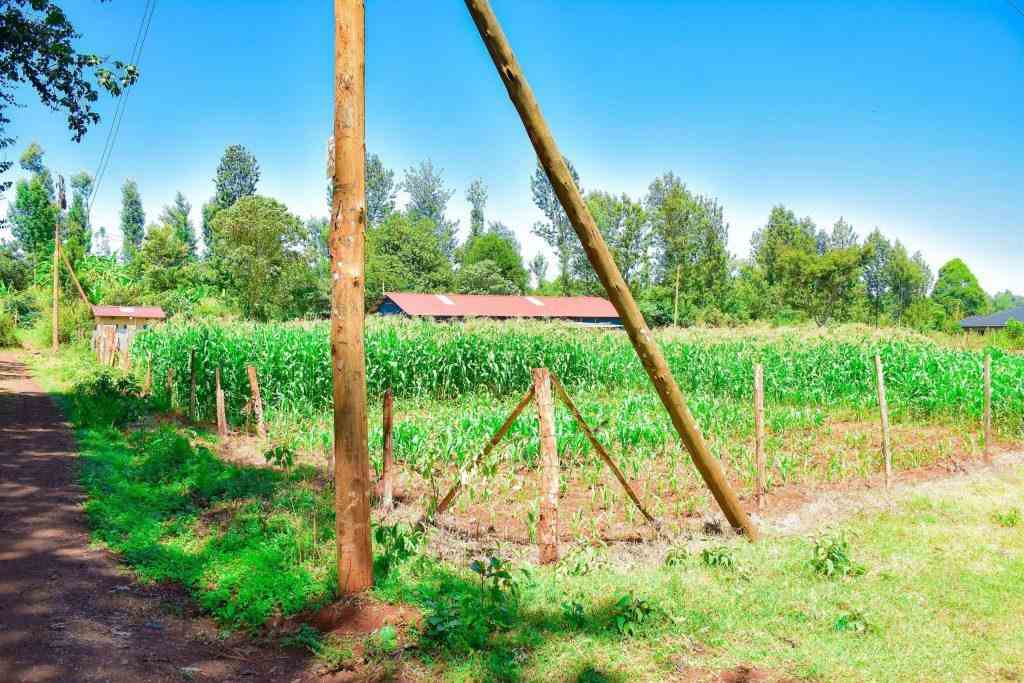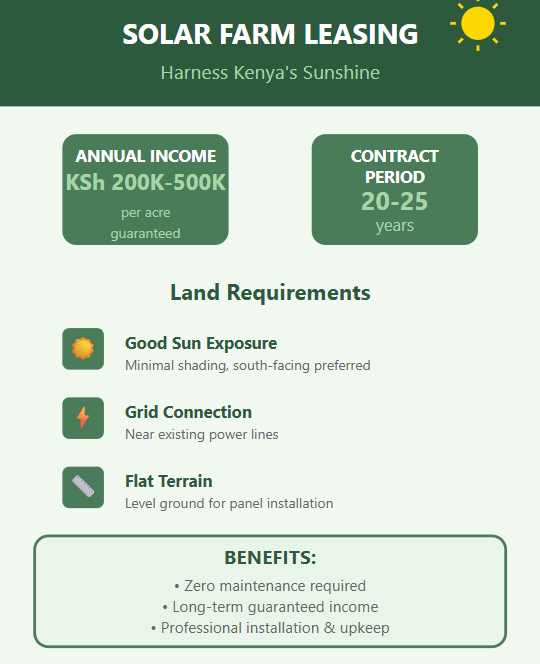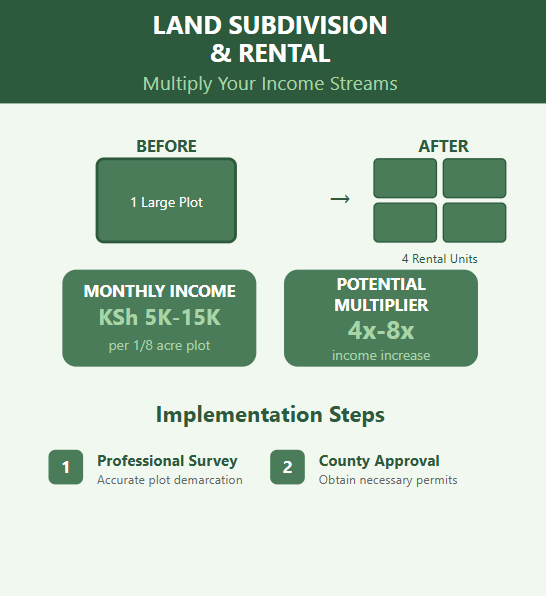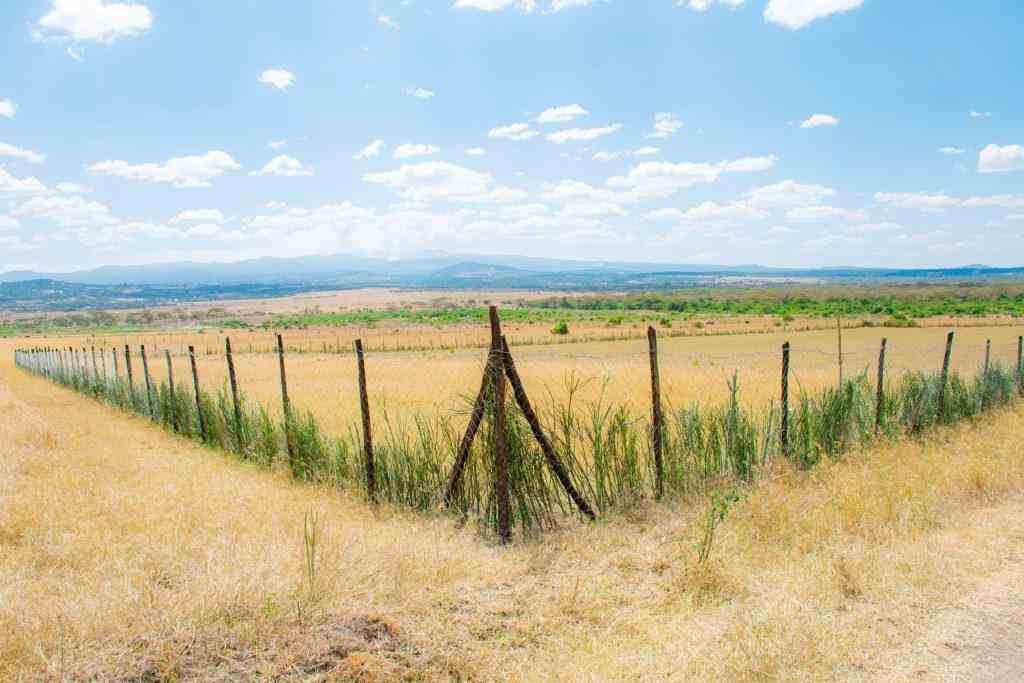Owning land in Kenya presents unique opportunities to generate steady income without the daily grind of active management. While many landowners let their plots sit idle, smart investors are turning their land into reliable passive income streams that work around the clock.
Agricultural Leasing
Leasing your land to farmers remains one of the most straightforward passive income approaches. In Kenya’s agricultural regions, fertile land can command rental rates of KSh 15,000 to KSh 50,000 per acre annually, depending on location and soil quality. The key is finding reliable tenants who will maintain your land while paying consistent rent.
Contract farming arrangements offer even better returns. Partner with established agricultural companies who provide inputs, technical support, and guaranteed markets. Your role becomes minimal while earning 20-30% of the harvest value. Companies like Kenya Seed Company and various horticultural exporters actively seek land partnerships.

Solar Farm Development
With Kenya’s abundant sunshine and government support for renewable energy, solar leasing has become increasingly attractive. Solar developers pay landowners KSh 200,000 to KSh 500,000 per acre annually for 20-25 year lease agreements.
The process is straightforward: solar companies handle all development, installation, and maintenance while you collect monthly payments. Your land must have good sun exposure, grid connectivity nearby, and minimal shading from trees or buildings.

Tree Farming
Planting commercial trees creates long-term passive income while improving your land’s value. Eucalyptus trees mature in 8-10 years and can yield KSh 300,000 to KSh 800,000 per acre when harvested. Bamboo offers faster returns, with commercial harvesting possible after just 3-4 years.
Indigenous hardwoods like mahogany and teak take longer to mature but command premium prices. The government’s forest restoration initiatives also provide subsidies and technical support for tree farming projects.
Land Subdivision and Rental
Converting larger plots into smaller rental units can multiply your income. Agricultural land near urban centers can be subdivided for small-scale farming, workshops, or storage facilities. Monthly rental rates of KSh 5,000 to KSh 15,000 per eighth-acre plot are common in peri-urban areas.

Ensure proper surveying, obtain necessary approvals from county governments, and install basic infrastructure like access roads and water points to maximize rental appeal.
Livestock Partnerships
Rather than raising livestock yourself, partner with experienced pastoralists or dairy farmers. Provide grazing land in exchange for a percentage of profits or fixed monthly payments. Dairy farming partnerships can yield KSh 30,000 to KSh 80,000 monthly per acre of good pasture.
These arrangements work particularly well in areas with reliable water sources and year-round grass growth. Your partners handle daily management while you earn from your land’s productive capacity.

Cell Tower and Infrastructure Leasing
Telecommunications companies pay substantial amounts for strategic land locations. Cell tower leases can generate KSh 100,000 to KSh 300,000 monthly for small plots in high-traffic areas. Water tower installations, electrical substations, and communication infrastructure also provide steady rental income.
Location determines everything in infrastructure leasing. Land along major highways, near population centers, or in areas with poor network coverage commands premium rates.
Tips to Getting Started
Begin by assessing your land’s unique advantages. Soil quality, water availability, location, and size all influence which passive income strategies will work best. Conduct soil tests, survey your boundaries, and research local market demands.
Consult agricultural extension officers, solar developers, and local county offices to understand available opportunities and requirements. Professional land valuers can help determine realistic rental rates for your area.
